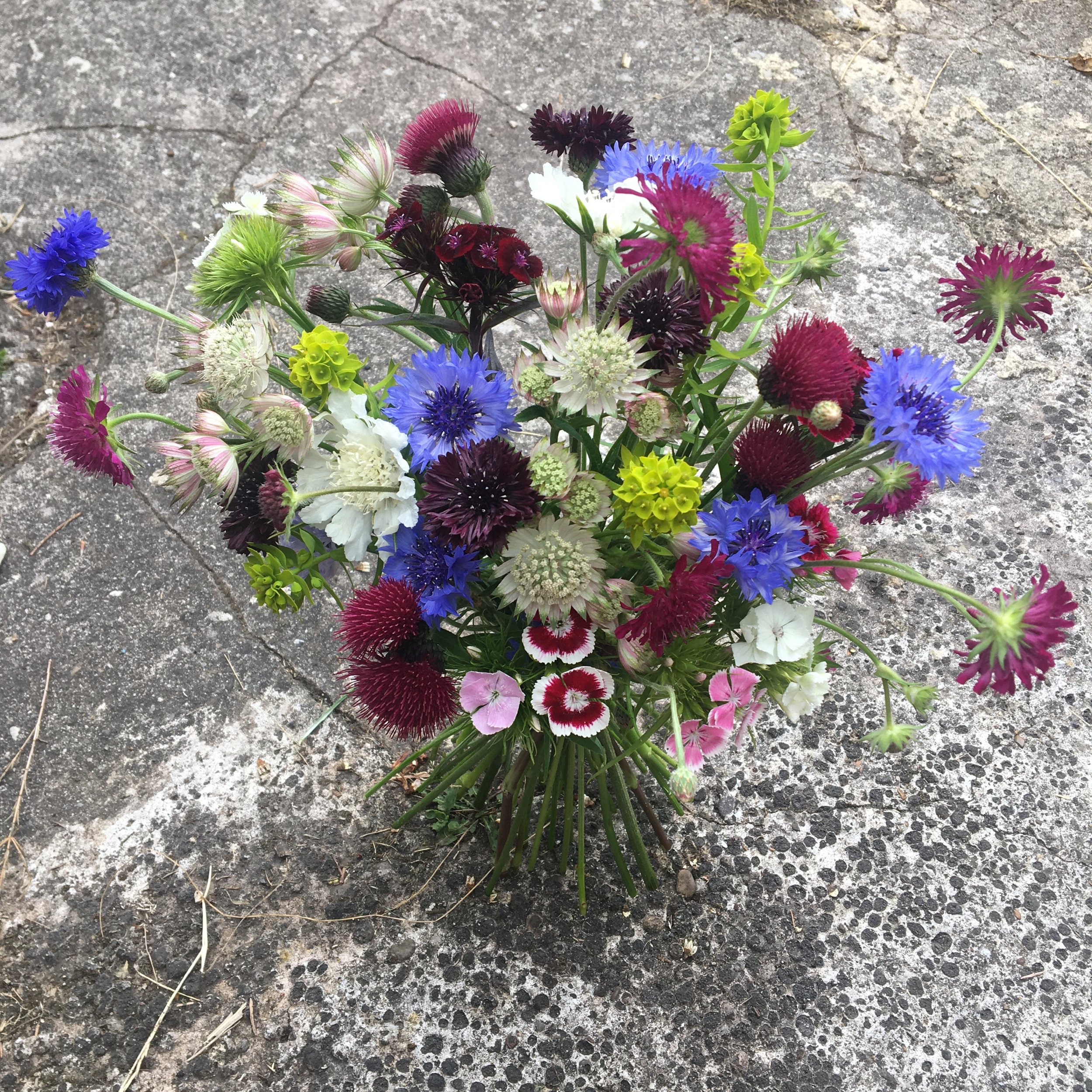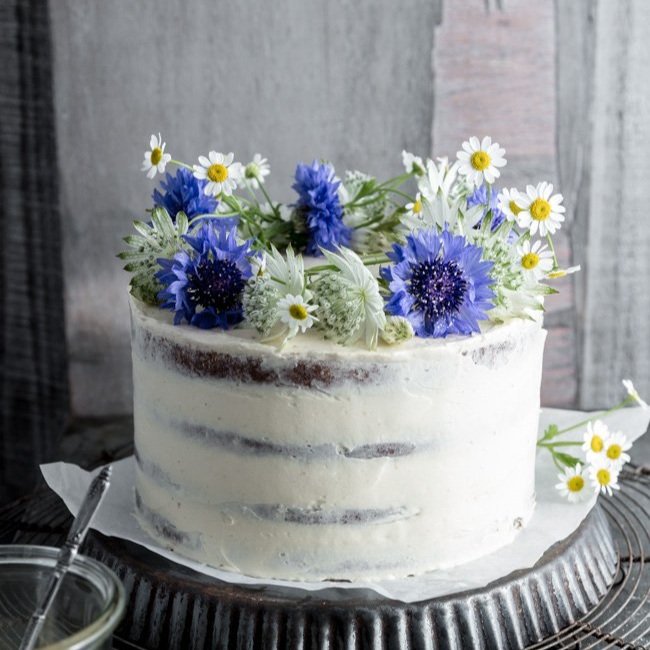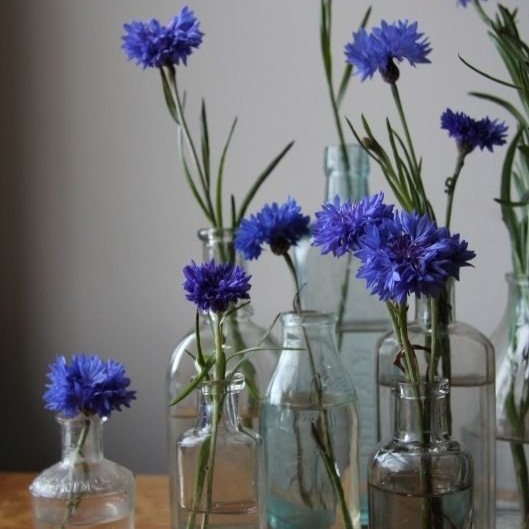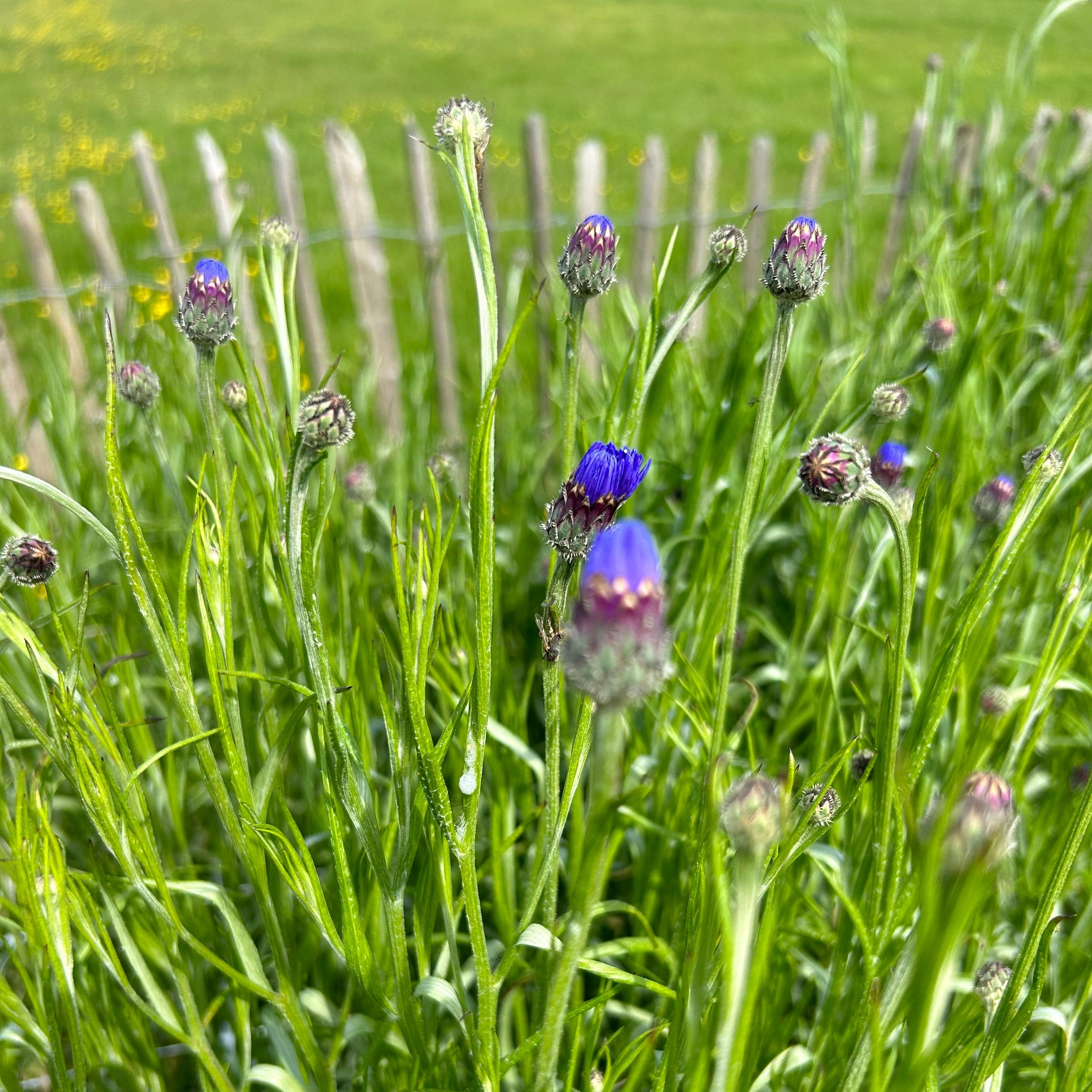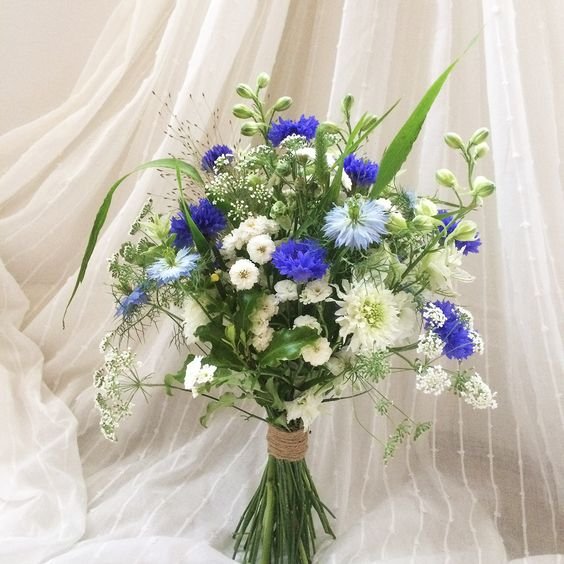May Spotlight: Cornflowers
Ellie Jones
On the blog this month, we have another guest writer, please welcome Sacha aka The Floral Potager - like Sarah from Compton Garden Flowers last month, Sacha is another one of my local suppliers. Although they’ve been a little slow in the fields this year due to the long cold start to this year’s spring, Cornflowers are finally blooming and I’ll leave Sacha here to share a little more about these cuties...
“Cornflowers, scientifically known as Centaurea cyanus, are beautiful wildflowers that have captivated people for centuries. These delicate blossoms, with their vibrant blue hue, are native to Europe and have become popular not only for their beauty but also for their cultural and symbolic significance.
Cornflowers are annual plants that typically grow between 1 and 3 feet tall. They possess slender stems with narrow, lance-shaped leaves that give rise to solitary flowers at the top. The flowers are characterized by their distinct, intense blue colour, although they can also be found in shades of pink, white, and purple. The striking blue petals surround a central disk of yellow florets, creating a visually captivating contrast. These flowers have a daisy-like appearance, and their simple elegance adds a touch of natural beauty to any garden where they will benefit pollinators.
They are best grown in full sun in an open position and can be mixed with other wildflowers such as corncockles and poppies. Sow seeds from March to May outdoors for flowers from June to September, or sow during August and September to flower from May onwards the following year.
These wildflowers have a rich history and cultural significance. In the past, cornflowers were commonly found growing among cereal crops, particularly cornfields, hence their name. They were considered troublesome weeds by farmers due to their invasive nature. However, over time, their aesthetic appeal won the hearts of many, and they are now cherished as ornamental plants in gardens and floral arrangements.
Symbolically, cornflowers are associated with various meanings. In folklore and traditional medicine, they were believed to possess medicinal properties, often used to treat eye ailments and promote healthy vision. Additionally, cornflowers are a symbol of hope, prosperity, and fidelity. They have also been associated with remembrance, making them a popular choice for memorial gardens and commemorative ceremonies, particularly in Europe.
The beauty and versatility of cornflowers have made them a favourite among gardeners and flower enthusiasts. Cornflowers attract pollinators like bees and butterflies, making them a valuable addition to any pollinator garden and make excellent cut flowers, adding a touch of natural charm to floral arrangements and bouquets. They also dry well and keep their colour to use in dried flower arrangements, as dried petal confetti, or for dyeing fabrics.
In addition to their ornamental value, cornflowers have culinary uses as well. The petals of these flowers are edible and can be used as a decorative garnish in salads, desserts, and beverages. They have a mild, slightly sweet flavour and add a pop of colour to culinary creations.”

